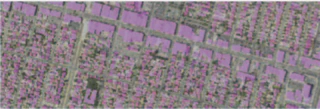Ramifications of Evolving Misbehaving Convolutional Neural Network Kernel and Batch Sizes
Feb 10, 2019·, ,,·
0 min read
,,·
0 min read
Mark Coletti
Dalton Lunga
Andreas Berres
Jibonananda Sanyal
Amy Rose
 Building footprint detection. This depicts detected building footprints, highlighted in purple, by applying a CNN model to satellite imagery.
Building footprint detection. This depicts detected building footprints, highlighted in purple, by applying a CNN model to satellite imagery.Abstract
Deep-learners have many hyper-parameters including learning rate, batch size, kernel size - all playing a significant role toward estimating high quality models. Discovering useful hyper-parameter guidelines is an active area of research, though the state of the art generally uses a brute force, uniform grid approach or random search for finding ideal settings. We share the preliminary results of using an alternative approach to deep learner hyper-parameter tuning that uses an evolutionary algorithm to improve the accuracy of a deep-learner models used in satellite imagery building footprint detection. We found that the kernel and batch size hyper-parameters surprisingly differed from sizes arrived at via a brute force uniform grid approach. These differences suggest a novel role for evolutionary algorithms in determining the number of convolution layers, as well as smaller batch sizes in improving deep-learner models.
Type
Publication
In 2018 IEEE/ACM Machine Learning in HPC Environments (MLHPC)